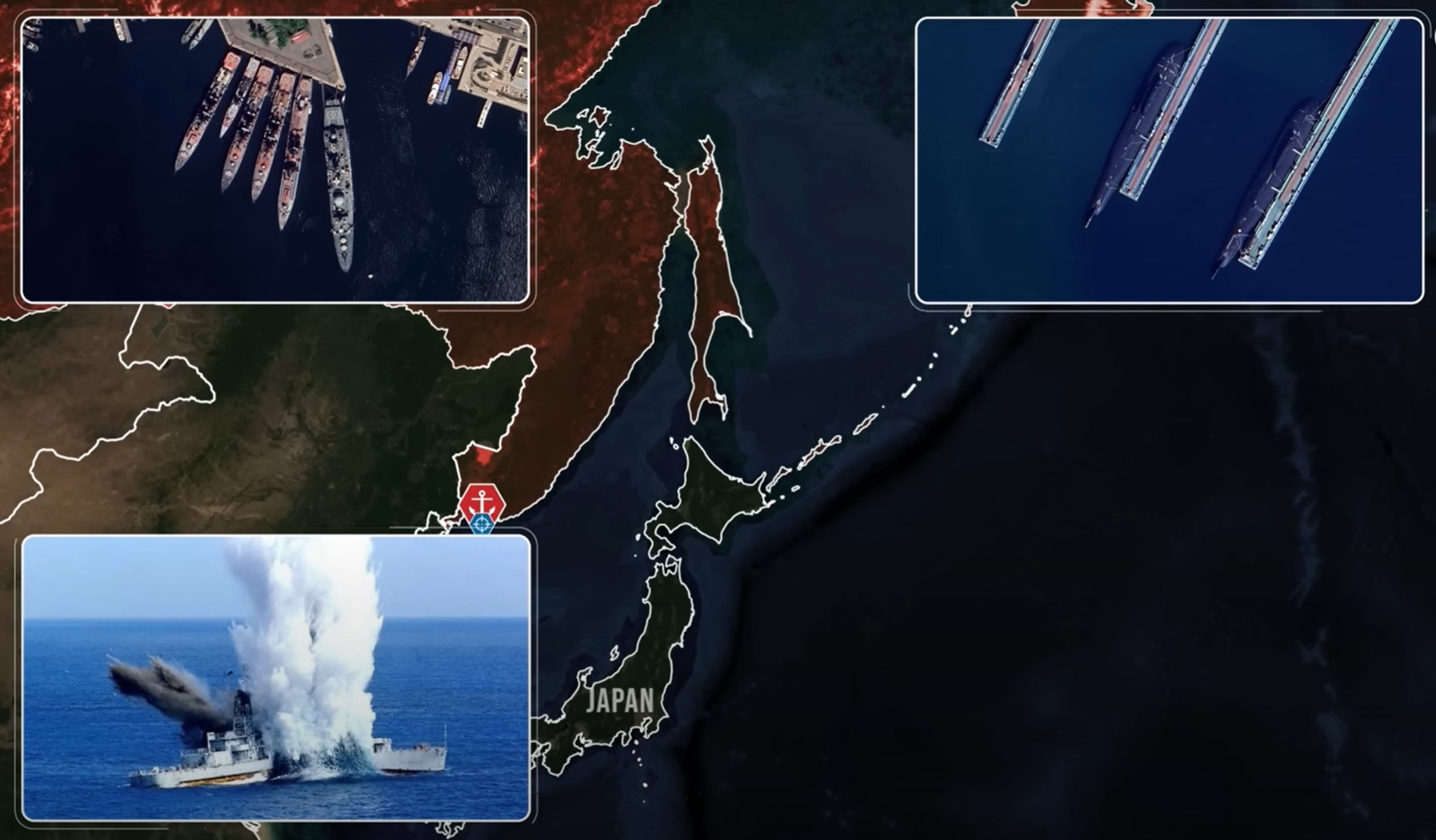Today, there are a lot of interesting updates from the Sea of Japan. Here, after Ukraine’s audacious underwater drone strike on the Kerch Bridge, Russian analysts have begun sounding the alarm over the possibility of an even more devastating follow-up.
To them, the Kerch operation wasn’t just a spectacular success—it looked like a rehearsal for something far more dangerous, aimed at Russia’s most sensitive naval bases in the far east.

In light of the massively successful operation Spiderweb, showing Ukraine’s ability to strike deep in the heart of Russian territory by both conventional and unconventional means, the Ukrainian Security Service carried out another stunning strike. In their own, so-called, special operation, Ukrainians hit the underwater support structure of the Kerch bridge. The estimated 1,100 kilogram explosion detonated around 10 meters deep, making the damage more difficult to assess and repair.
Notably, Ukraine announced the strike by releasing footage taken from a Russian security camera, showing how deeply infiltrated Ukrainian intelligence services are in Russian networks.
New Toloka drones threaten Russian naval defenses
To conduct the strike, Ukrainians used a new variant of underwater naval drone, the Toloka 1,000 or the Toloka 400. These new underwater drones, upgrades of the Toloka 150, can deliver between half a ton and 5 tons of explosives at a range of 1,000 to 2,000 kilometers, respectively. The drones can operate at a depth of up to 40 meters. Their compact design and quiet propulsion systems make them ideal for covert sabotage missions against high-value Russian naval and logistics infrastructure.
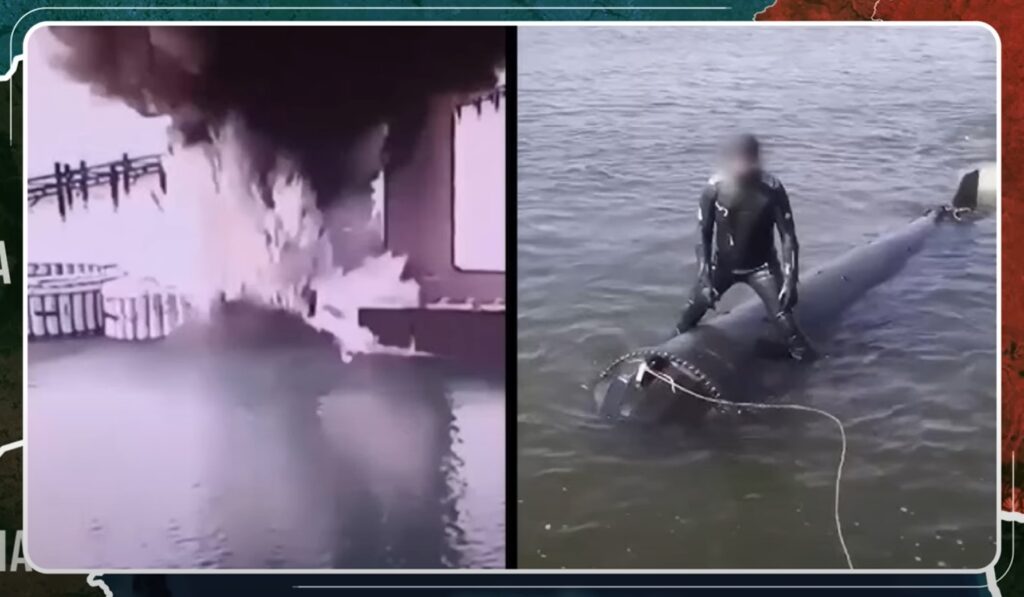
However, Russian analysts note that Ukraine could have used multiple Toloka drones in sequence to breach defenses and collapse the bridge. They suggest that this was therefore not the main strike, but rather a field test of upgraded underwater drone capabilities.
Operation Spiderweb demonstrated that Ukraine can strike deep into Russia using unconventional platforms, hitting unexpected targets beyond traditional frontlines. Now, with new and upgraded underwater drones in play, Russian analysts started raising the alarm that the Pacific naval assets are under imminent threat.
Russia warns of possible drone strikes in Pacific
Russian analysts are worried that to hit Russia’s far east, Ukrainians could realistically use container ships laden with concealed naval drones. The Ukrainians operate a large fleet of merchant vessels, including container ships. These are more difficult to regulate and inspect, making it easier to smuggle the underwater drones in them.
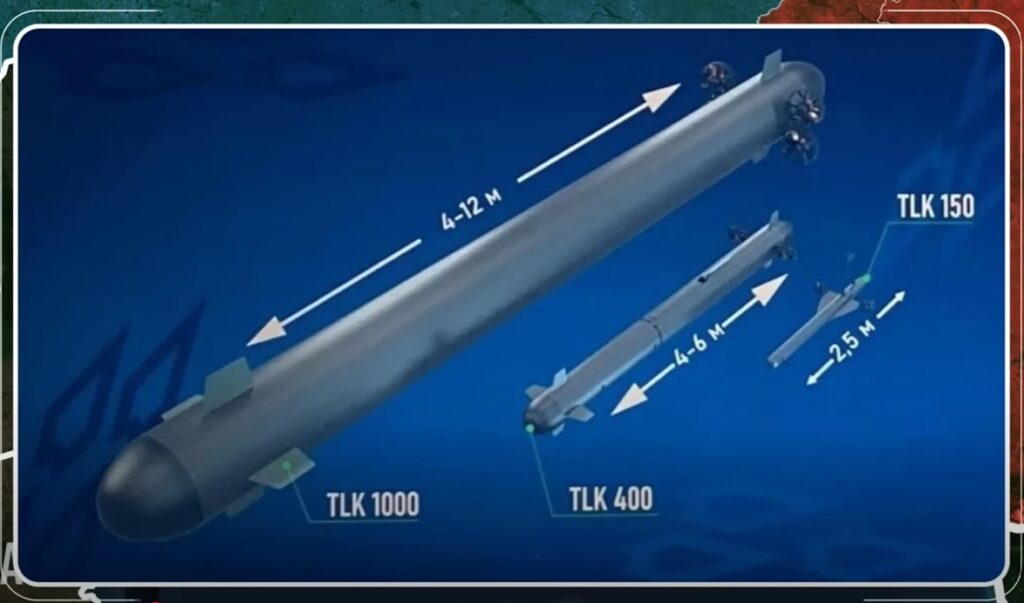
Furthermore, careful coordination of shipping towards international ports of Ukrainian allies, such as Australia, the United States, Japan, and South Korea, could reduce the risk of such an operation being intercepted, especially with the cooperation of allied intelligence services.
Once the container ships enter the Sea of Japan, the Sea of Okhotsk, or even dock in Russian ports, they would already be within range of releasing underwater drones, with the Toloka 1,000 having a range of 2,000 kilometers at the least. Ukraine could launch these drones from the deck or through an underwater configuration comparable to a torpedo launch.
Ukraine eyes Russian nuclear submarine base in Kamchatka
The targets would be the Russian naval bases in Vladivostok and on the Kamchatka Peninsula. The Vladivostok base houses the Russian Pacific surface fleet, with several destroyers, corvettes, and the flagship of the Russian Pacific fleet, the Cruiser Varyag. The base in Kamchatka houses Russia’s nuclear submarines, which are carriers of both nuclear-capable ballistic and cruise missiles, and is known as one of Russia’s most secure facilities.
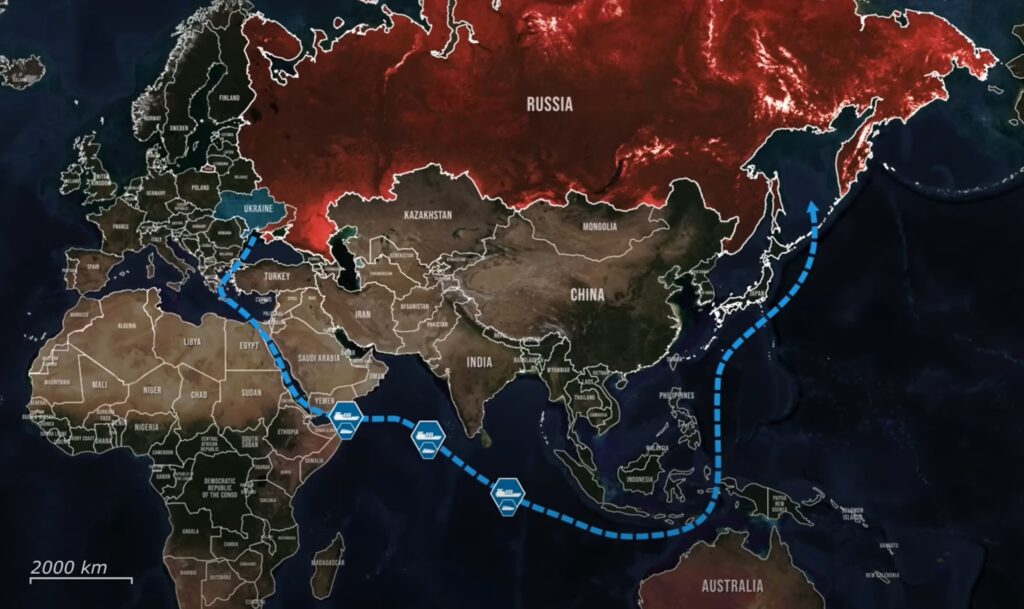
With the Toloka 1,000 having a maximum payload of up to 5 tons, 10 times higher than conventional torpedoes shown on screen now, Ukrainians could hit and sink several ships with only one drone. Such strikes would not have a direct military impact for Ukraine, but it would bring the war to the Russian home front in a way never seen before.
Ukraine expands war to Russian Pacific fleet
Additionally, it would undermine Russia’s ability to defend itself in a broader sense, eroding the Russian nuclear triad even further, after already having lost over a third of its strategic bomber fleet. Such an operation would exponentially magnify the pressure on Russia to seek a realistic negotiated peace settlement, as the Ukrainian Istanbul delegation already noted how, after the launch of Operation Spiderweb, their Russian counterparts were much less hostile than before.
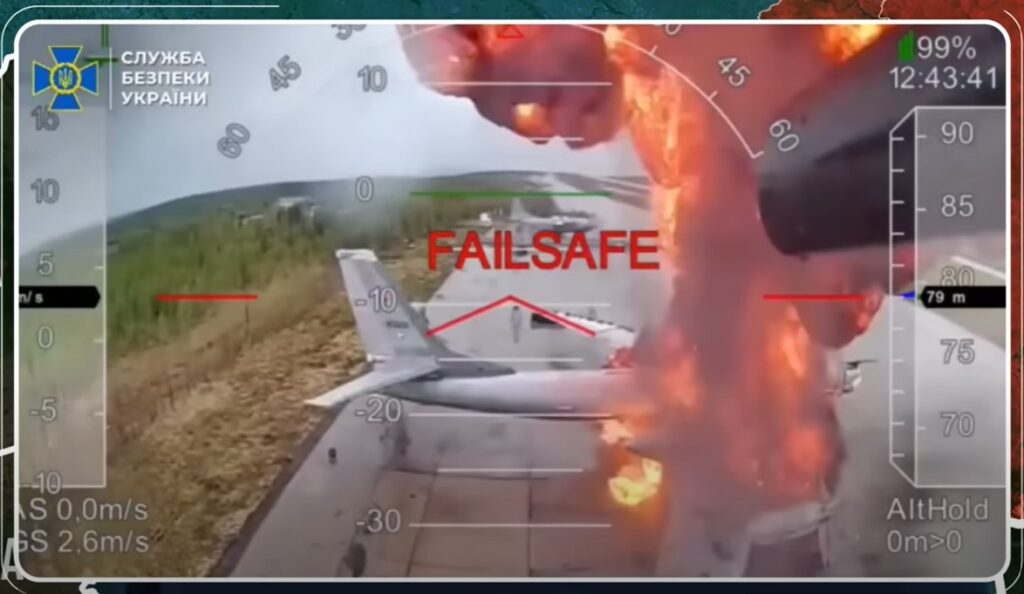
Overall, Ukraine’s strike on the Kerch Bridge fits into a broader, coordinated campaign, seemingly without range limitations. It marks the start of a new phase in long-range underwater warfare. With upgraded Toloka drones now capable of reaching over 2,000 kilometers, Russian analysts openly worry this was only a trial run, and that Ukraine’s real targets lie in the Pacific, where Russian nuclear submarines and warships sit vulnerable in a false sense of security.
As the pressure mounts and the reach of Ukraine’s unconventional operations expands, Ukraine is actively undermining Russia’s domestic and international projection of strength and invincibility.
In our regular frontline report, we pair up with the military blogger Reporting from Ukraine to keep you informed about what is happening on the battlefield in the Russo-Ukrainian war.




